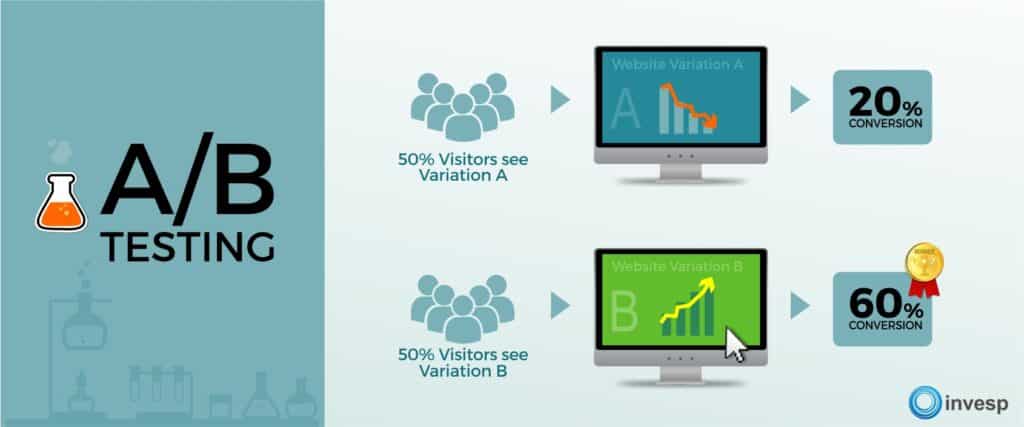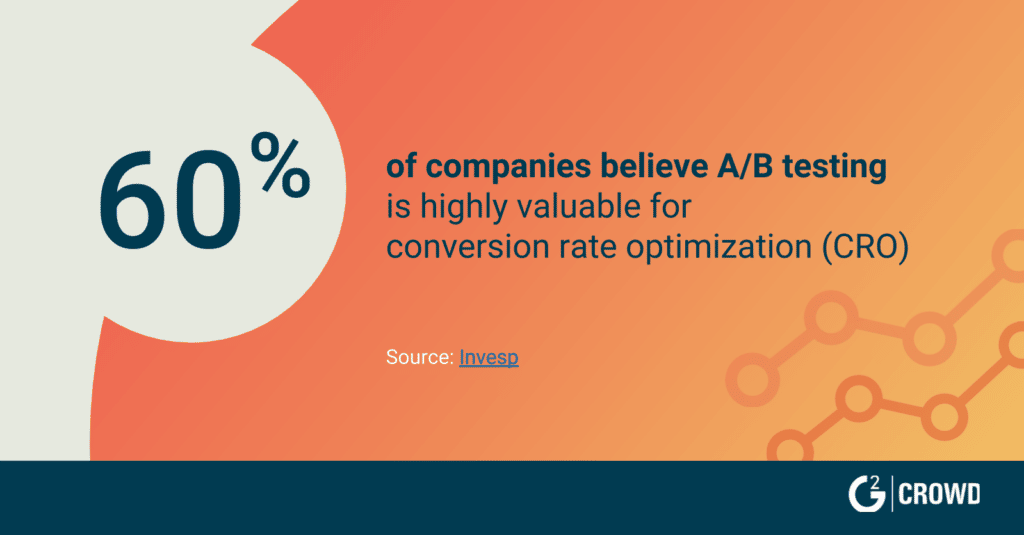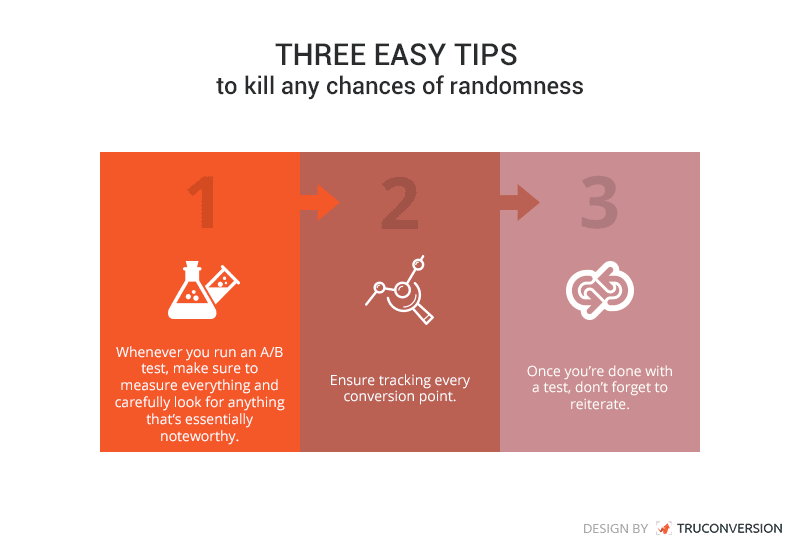When pushing marketing initiatives that will foster growth objectives, it can be easy to just go with your gut to decide how to create it. But what if your gut is wrong? How will you even know?
There are a plethora of items that you have to consider, especially the following:
- Which channels will drive the best conversions with long-term value to your business?
- How will you measure ROI?
- What is your strategy to figure out messaging that drives engagement?
- How will you further optimize your implementations to ensure you see positive results?
The questions don’t just end there. However, one of the easiest places to start is to employ A/B testing with every tactical execution. Additionally, before you even begin A/B testing, make sure that you are clear on what your goals are. Doing so will keep you on the right track to testing and executing tactics that are going to help you meet your goals.
In today’s blog post, I will give a high-level overview of what A/B testing is, and why it is vital for marketing as well as business growth.
Let’s get started…
What is A/B testing?
A/B testing (also known as split testing) is the process in which you show two variants of a marketing asset or campaign (e.g. emails, landing pages, CTAs, etc.)

For example, you can test two different landing pages and split up your traffic to each. By comparing which variant drives more conversions, you can determine which strategies were most effective and choose to replicate these strategies in the future. This way, you are making well-informed, data-backed decisions in order to optimize your marketing campaigns, rather than going with your gut instinct.
In 2000, Google ran A/B tests for the first time in order to determine the optimal number of search engine results per page. It learned how even tenths of a second could have a huge impact on user satisfaction. Presently Amazon, eBay, and Netflix too make use of A/B testing, in order to constantly evolve their websites to better serve their customers.
In fact, Google, Facebook, and Amazon perform 10,000 A/B experiments per year, which goes to show the importance these prominent companies place on split testing.
Why should you do A/B testing?
A/B testing can help you make informed decisions in order to improve your bottom-line. With controlled tests, you can see which marketing strategies are most effective and then focus your resources there.

Here are some KPIs that you can hone in on to see if your A/B testing is working:
Higher Conversion Rate:
You can use A/B testing to test anchor text, colors, or different locations on your CTAs to boost the number of people going to landing pages. Create more leads by getting more visitors to click through and fill out forms on your website.
According to a Conversion Rate Optimization report, 71% of the companies which tested landing pages before publishing noticed a visible sales increase.
Gmail once performed A/B testing with 50 shades of blue for their CTA in order to see which converted more customers. SAP too used A/B testing for the same purpose to check the color which was most effective in bringing in more sales. They were successful in increasing their conversion rate by 32.5%
Lower Bounce Rate:
Each second counts and as per a study, a delay of even a second can result in a 7% reduction in conversion. Pop-up ads and other heavy elements can play a big role in hindering conversion rate. You can test different website design versions, features, and fonts to see which ones retain more visitors.
Lower Cart Abandonment (if you are selling products):
As many as 70% of online shoppers never make it to the checkout process. To stop your business from an abundance of abandoned carts, use A/B testing on various aspects of the shopping cart process. Lower the abandonment rate by testing the number of steps in the checkout process, CTA buttons, special offers, and upsell and cross-sell options.
What elements should you focus on when performing A/B testing?
Some elements of a marketing asset contribute more to conversions. It’s best to zero-in on the following elements and deliver a powerful change through A/B testing.
Headlines
The headline sets the first impression and decides whether or not you’ll be able to convert the visitor. In fact, although 8 out of 10 read the headline copy, only 2 manage to keep reading beyond that. Don’t lose your customer on the first step of the way. Keep it simple, crisp, and to the point.
The headline can have a HUGE impact. According to Koechley, traffic at Upworthy varies by as much as 500% simply due to the headline.
Run the headlines through an A/B testing procedure checking the length of the headline, use of positive and negative words, and different USPs.
CTAs
Your CTA should motivate the reader to follow through with your offer. You can improve the conversion rate by changing the wording in the CTA just like Friendbuy did. It offered two different alterations for the CTA and through the A/B testing, improved its call-to-action CTR by 211%.
Keep the CTA simple and experiment with action-oriented words for your CTA. For instance, just using the word ‘Submit’ on the CTA button can make conversion rate soar to 320%.
Emails
When creating an email marketing campaign, you should test the subject line. Arouse curiosity in the reader by making them want to open and read the email. Test out two versions of the subject lines in A/B testing for an effective email campaign.
When Experian tried A/B testing their subject lines, personalizing the subject line led to a 42% increase in the open rate for emails related to consumer products.
Another thing to test in your email is the length of the subject line. A subject line of 6 to 10 words gets the highest percentage of opens (21%), followed by a word length of 0 to 5 words and 11 to 15 words. If you want your email to be read by the greatest number of your target audience, you should aim for an optimal length of around 61 to 70 characters in the subject line.
Social proof
Did you know that 70% of consumers go through online reviews before making up their minds about a purchase? Plus, these online reviews are considered 12 times more trustworthy than the manufacturer’s description.
Another study found out that reviews led to an 18% increase in sales. In fact, customers who go through online reviews are 105% more likely to purchase as compared to those customers who don’t.
Display social proof on your product pages and landing page in an attractive way. Social proof includes customer testimonials, questions, ratings, endorsements, and comments.
Design
When A/B testing the website, typography is an important element that you should consider. The most popular typeface on the Internet is Georgia, but some experts suggest opting for Sans Serif.
Use testing to figure out the optimum design for your website.
In addition, experts suggest keeping dark-colored text on light-colored background for a more impactful website. Font size, typefaces, and layout also play an important role in improving the website.
Overall Messaging
From ad copy to the body of your email messages, messaging plays one of the most important roles with understanding what type of content is going to drive engagement all the way to conversion for you.
Testing your messaging will also help you understand the following:
- Does your target audience prefer longer content or shorter?
- Does your target audience want educational content or just hard selling content work?
- What emotive words or phrases are driving purchases?
To sum it up
A/B testing can play a huge role in conversions. Always keep testing for continuous improvement on your website, ads, emails, and more. But be careful—if you test too many things at the same time, you may not be able to tell which differences actually mattered to potential leads.

Be systematic in your A/B testing so that you can be sure that you have data that is correct and actionable. In other words, isolate certain variables so that you have clear data points to help you drive better decision making. As you continue testing, the data will help you to see how much a minor modification can help drive better results.






3 Responses